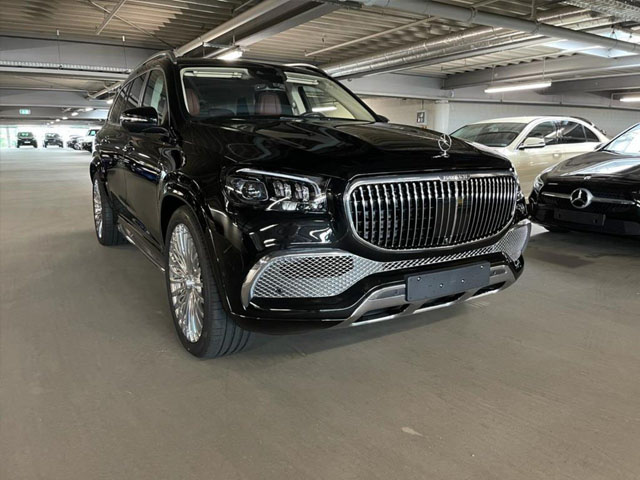
Planning a trip often involves a lot of logistics, and one of the key components is deciding how you’ll get around once you arrive at your destination. For many travelers, renting a car offers the flexibility and freedom to explore at their own pace. However, with so many options available, choosing the right rental car can be overwhelming. Here’s a comprehensive guide to help you make the best choice for your trip.
1. Assess Your Needs
Before diving into the specifics of car rentals, take a moment to assess your needs. Consider the following factors:
Number of Passengers
How many people will be traveling with you? If you’re traveling solo or as a couple, a compact car might suffice. However, for families or groups, you may need a larger vehicle, such as an SUV or a minivan, to ensure everyone has enough space and comfort.
Luggage Space
Consider how much luggage you’ll be bringing. If you have a lot of bags or larger items like sports equipment, you’ll need a vehicle with ample trunk space. A larger vehicle will also help you avoid cramming everything into tight spaces, making for a more enjoyable trip.
Terrain and Weather
Think about the terrain and weather conditions at your destination. If you’re heading to a city with smooth roads, a compact or standard car may be perfect. However, if your trip includes mountainous regions or off-road adventures, an SUV or a four-wheel-drive vehicle may be more appropriate.
2. Determine Your Budget
Budgeting for your rental car is crucial. Rental prices can vary widely based on several factors, including the type of vehicle, rental duration, and demand. Here are some tips to keep costs manageable:
Compare Prices
Use online comparison tools to check prices across different rental companies. Don’t forget to factor in additional fees, such as insurance, taxes, and fuel charges, which can significantly affect the total cost.
Consider the Rental Duration
Rental rates can change based on how long you need the vehicle. Sometimes, renting for a week can be more economical than renting for just a few days. If your trip allows, look into longer rental periods to see if they offer better deals.
Watch for Promotions
Keep an eye out for promotions and discounts. Many rental companies offer special deals, especially during the off-peak season. Additionally, membership programs (like AAA or AARP) often provide discounts.
3. Explore Rental Options
Now that you have a clear understanding of your needs and budget, it’s time to explore rental options. Rental companies typically offer a range of vehicles, from economy cars to luxury sedans. Here are a few categories to consider:
Economy Cars
If you’re looking for a budget-friendly option, economy cars are often the most cost-effective choice. They’re fuel-efficient and easy to maneuver in urban areas, making them ideal for city trips.
SUVs and Minivans
For families or groups, SUVs and minivans provide the extra space needed for passengers and luggage. These vehicles are also more comfortable for longer journeys and can handle a variety of road conditions.
Luxury Cars
If you’re celebrating a special occasion or simply want to indulge, consider renting a luxury car. While these vehicles can be pricier, they offer a unique experience that can elevate your trip.
4. Check the Rental Company’s Policies
Before finalizing your reservation, it’s essential to read the rental company’s policies. This can help you avoid surprises and ensure a smooth rental experience. Pay attention to the following:
Fuel Policy
Rental companies often have different fuel policies, which dictate how you should return the vehicle. Common policies include:
- Full-to-full: Pick up the car with a full tank and return it with a full tank.
- Pre-purchase: Pay for a full tank upfront and return the car empty (this usually costs more).
Choose the policy that aligns best with your travel plans.
Mileage Restrictions
Some rental agreements come with mileage limits. If you plan to do a lot of driving, make sure you choose a company that offers unlimited mileage to avoid extra fees.
Insurance Options
Consider whether you need additional insurance. While many personal auto insurance policies and credit cards provide coverage for rental cars, it’s essential to verify this before relying on it. If you don’t have coverage, evaluate the insurance options offered by the rental company.
5. Inspect the Vehicle
Once you’ve picked up your rental car, take a moment to inspect it before you hit the road. Here’s what to look for:
Condition of the Car
Check for any existing damage, such as scratches or dents, and ensure they are documented by the rental company. This can help you avoid being charged for pre-existing issues when you return the vehicle.
Features and Controls
Familiarize yourself with the car’s controls, including headlights, windshield wipers, and air conditioning. If you’re driving a vehicle with unfamiliar features, take a few minutes to adjust the settings before you start driving.
Fuel Level
If you’ve opted for a full-to-full fuel policy, double-check the fuel level. Ensure that the car is indeed full before you leave the lot. Visit her DorsettHotels where you will find lots of great information and practical advice about choosing the right rental car

6. Plan for Return
Before your trip comes to an end, plan for the car return. Make sure you know the location and hours of the rental return facility, as well as any specific instructions from the rental company. Here are a few final tips:
Allow Extra Time
Factor in extra time for returning the vehicle, especially if you’re returning it at an airport. This will help ensure you don’t miss your flight or face any last-minute issues.
Clean the Car
While rental companies typically don’t expect you to return the car spotless, a quick clean-up can help avoid cleaning fees. Remove any personal belongings and trash before returning the vehicle.
Keep Documentation
Save any receipts or documents related to your rental. This can be helpful in case of disputes or questions about charges after your trip.
Conclusion
Choosing the right rental car can significantly enhance your travel experience. By assessing your needs, budgeting wisely, exploring your options, and understanding rental policies, you’ll be well on your way to a smooth and enjoyable trip. With the right vehicle at your disposal, you can explore new places, create lasting memories, and enjoy the freedom of the open road. Happy travels!
